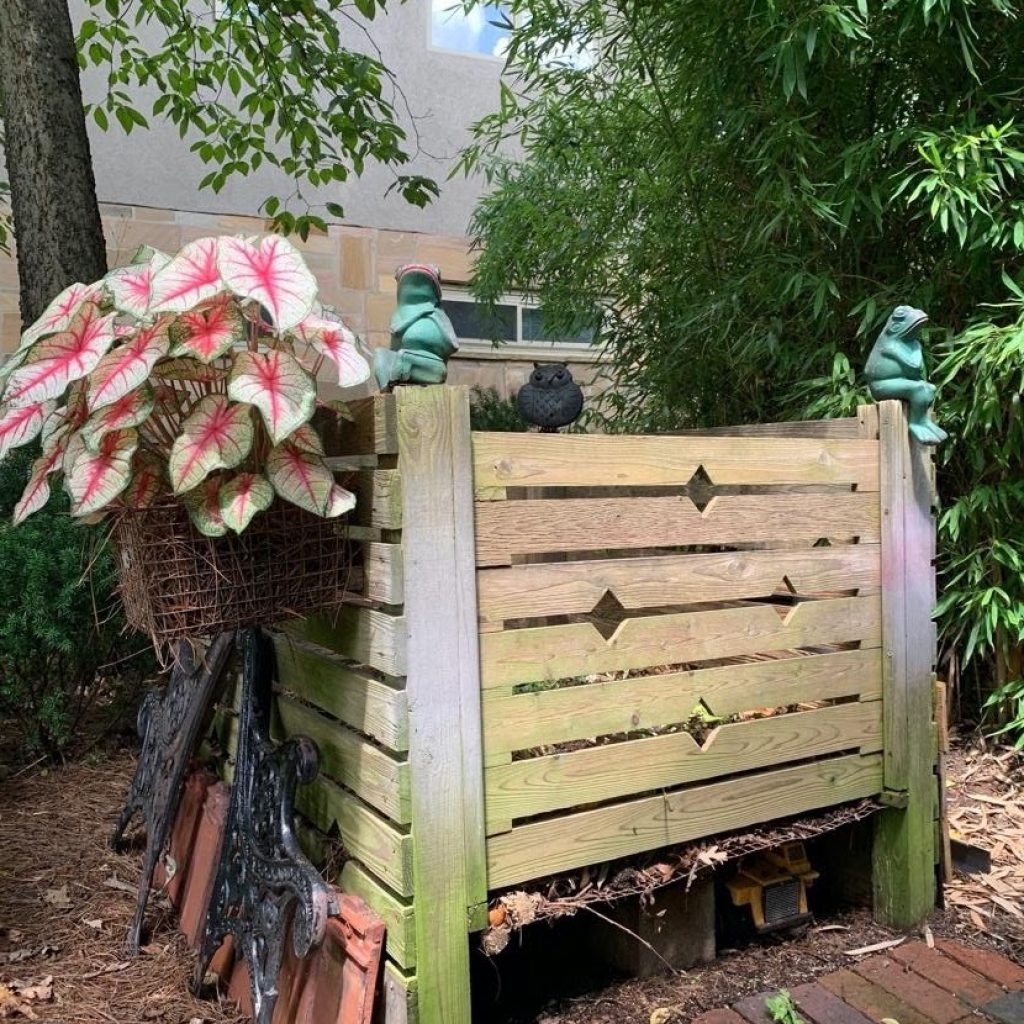7 Tennessee Landscaping Ideas for the Sustainability & Eco-Conscious Homeowner
For those of you who want to contribute to a better environment in a tangible way, I’ve got an idea for you. Create a sustainable landscape at home. These can include backyard spaces, front lawns and other parts of the house that contain a mix of natural design and gardening techniques.
I’ll provide more insight on this below along with some ideas for Tennessee landscaping that you can follow.
But first: why should we even think sustainable at all?
Climate Issues that Affect Knoxville, TN
Amidst all the COVID-19 headlines, there are also climate and environmental concerns affecting us here in Knoxville and East Tennessee. Of course, these trends are applicable to many parts of the world. But they’re a reminder that we as citizens have a responsibility to take care of our planet because frankly, it’s the only one we’ll ever have.
Rising Temperatures
I came across a report the other day that revealed some concerning trends in the state. For example, it said that in 1998, Knoxville saw an average of 53 days where temperatures surpassed 90 degrees. Two decades later, the average number of days we’ve seen temperatures over 90 degrees now sits around 63. And that number is expected to increase.
More frighteningly, these increases in temperatures are also expected to contribute to more wildfires due to drier conditions.
Health Hazards
Climate shifts may worsen our health, increasing the rates of cardiovascular disease, respiratory problems and incidence of heat strokes. Tropical diseases may also increase too, especially mosquito-borne ones such as the Zika virus. And believe it or not – Malaria (yes, States-side).
Also, allergy season may become more problematic as well. A report from The Asthma and Allergy Foundation of America revealed that warmer temperatures between 1995 and 2011 may have increased the length of pollen seasons by 11 – 27 days.
I could go on with more effects such as the increase in duration and severity of hurricane season. But I’ll spare you from those details.
You might think to yourself: “how can I who’s just one person make a difference?”.
For example, it’s been suggested that if everyone planted one tree, it could have significant benefits for air quality. I have no doubt that we could help our planet by planting more trees and greenery. And that leads to my thoughts on homeowners planting sustainable home gardens.
Enter the Sustainable Garden
So what exactly is a sustainable garden?
Well here’s the catch – there’s no standard definition, but you’ll recognize one when you see one. The easiest way to put it is that a sustainable garden is built and sculpted in an eco-friendly way. Also, it doesn’t “compromise the ability of future generations to meet their needs”.
Ultimately, a sustainable garden gets its title by how it was created and how it functions.
Principles of a Sustainable Garden
- Use only 100% organic materials, NO chemicals
- Harvest stormwater
- Choose native plants
- Reuse and recycle resources
- Self-contained (no waste)
- Save seeds and propagate
- Build healthy soil
Benefits of a Sustainable Landscape
- Cost-Effective / reduces utility costs
- A decrease in chemical use
- Conserves water usage / reduces wasting of water
- Reduces individual carbon footprint
- May collectively reduce air/water and soil pollution
- Increases property value
Sustainable Gardens in the Flesh
Not only are these gardens dazzling to the eye but they’re also beneficial to the environment. You might want to create such a garden but not know where to start. Here are some principles or ideas to help you out.
“Blueprint” Your Garden Design
A sustainable garden needs to be built strategically. Where you place certain plants or how you install certain watering systems can affect the longevity and health of your garden. So don’t hesitate to map it all out.
A blueprint that lays out where you’ll place certain structures, plants for shading and walkways. Plus, other elements will make the actual garden construction more feasible.
Creating a master plan is an essential component of my landscape design process. There isn’t a single client of mine who hasn’t benefited from having one beforehand.
Organic fences
An organic fence is exactly how it sounds – a barrier made with living (possibly breathing) materials. Yes, wooden fences are technically in that category, but you can get even more organic with actual logs or saplings to create a natural divider.
Not only are these fences as effective as a non-organic fence in providing protection, but they also eliminate the need to waste of organic compounds (ie. tree branches). They also can contribute to an “earthy” or natural aesthetic.
High-Tolerance, Low-Maintenance Plants
A key to creating a truly sustainable garden is adding elements that don’t need too much attention. Plants that don’t need too much in terms of water, fertilizer and other “plant food” save the time, effort and resources you need to pour into keeping them healthy.
That makes your garden less of a burden on you and the environment as a whole since resources are minimal. Plant species such as Virginia sweetspire (Itea virginica) or Little bluestem (Schizachyrium scoparium) are great examples of this. They also can make great additions to the look of your garden in a very naturalistic way.
Native Plants
Closely related to the previous point is the use of trees and native plant species. Trees are must-haves because they cool down your house in the summer and redirect carbon from the atmosphere into the soil.
Think about that for a second. They can keep those AC costs down and make you a little less dependent on fertilizers. Native plants are also welcome guests in a sustainable landscape because they naturally grow in your area. With these plants, you don’t need to spend extra on resources to make them grow and stay healthy.
And here’s an added benefit of growing native species: they’re natural food sources and provide shelter for birds and insects in your area. That means your garden can become a little preservation “park” for such species.
Use Barrels for Water Storage
If you’re wise with water conversation, you’ll save both the environment and your wallet from being overtaxed. A simple way to conserve water in your garden is to set up a series of barrels.
That extra water can save you from relying on automatic sprinkler systems that lead to water wastage and the over-watering of plants. Of course, you need to take some precautions with barrel water. This includes keeping it covered to prevent mosquitoes and other water-breeding insects from seeking refuge.
I’ve found that covering any openings with a fine mesh screen does the job.
Use a Permeable Surface for Your Garden
Don’t neglect your paths and parking. The right surface is something to think about when coming up with landscaping ideas because it can contribute to your garden’s eco-friendliness. A permeable surface is one such option because it decreases rainwater runoff, which can put a burden on our city’s stormwater infrastructure.
Gravel, for example, is a great permeable surface because it allows water to seep into the ground and reduce the flow of water into drains. Of course, the increased water absorption allows for better water conservation, as well as better distribution for your plants.
Use Mulch
Mulch is essentially a layer of material added to the surface of the soil and it has widespread benefits for a sustainable garden. Mulch makes a sustainable landscape easier to maintain as it can suppress weed growth, add nutrients to the soil and moderate soil temperature.
Just don’t automatically think that all mulch must be purchased. If you have deciduous trees you also have mulch. I may write in the future exactly how this might benefit.
Compost
Whenever I tour visitors around our garden I always seem to save the best feature for last…my compost bin.
There really is no need to toss produce scraps in the trash when you can ultimately be building your own soil. The key to good compost is blending materials such as leaves, lawn clippings, and produce waste in the proper ratio so it won’t create unpleasant odors as it balances and breaks down.
There are also some fun ways to enhance the appearance of your compost bin. See my own below:

Is it Time to Create Your Own Sustainable Landscape?
It might very well be time to do it. We live in a complicated time where we’re worried about our environment and health, but also, the desire to have fewer financial burdens.
A sustainable landscape sits at the intersection of such concerns because it allows us to reduce our environmental impact while saving us money. You might be among the millions of Americans who want to simplify their lives while having a positive impact on our fragile planet.
If so, you’re a candidate for sustainable landscape practices at home, even if you’re limited in terms of budgeting and time. In the process of creating a healthier planet, you may find that an added benefit is that you suddenly find beauty in places you’ve often taken for granted.
Are you interested in sustainable landscaping ideas for your home and garden? Give me a call so that we can help you build the garden of your dreams.






